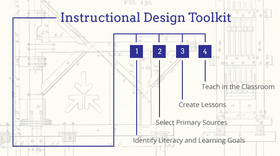Primary Source Exemplar: The Moon
Learning Objectives
Students will learn what archaeologists do and how the information they collect helps us understand the past, our world, and our universe. For this lesson they will see how a diary, written by a person in the past, helps us understand how new knowledge has changed our ways of thinking about the moon.
Students will be able to
Gather information from provided sources to answer a question
Recall information from experiences to answer questions
Explain what types of information we can gather from primary sources (photographs, objects, and/or documents/diaries).
Make observations to draw conclusions about people and places from the past, through the exploration of photos, objects, and/or documents/diaries.
Explain how people can learn more about history through the use of historical records.
Chronicle important events in their week through drawings
Standards addressed:
CCSS ELA
CCSS.ELA-Literacy.W.1.8 With guidance and support from adults, recall information from experiences or gather information from provided sources to answer a question
College, Career and Civic Life C3 Framework for Social Studies State Standards
D1.3.K-2. Identify facts and concepts associated with a supporting question.
D2.His.10.K-2. Explain how historical sources can be used to study the past.
D2.His.12.K-2. Generate questions about a particular historical source as it relates to a particular historical event or development.
Essential Question Connection
This lesson ties in directly with these essential questions
How do we know what happened in the past?
How do our perceptions change over time?
How might discoveries or new technology change our understanding of the world and our universe?
Students are guided through what archaeologists do and learn how what they find helps us understand the past, our world, and our universe. For this lesson, they will see how a diary written by a person in the past, helps us understand how new knowledge has changed our ways of thinking about the moon.
Lesson 1, Day 1: Part 1
Part 1 of this lesson will help build a background for students prior to exploring the text in Part 2. Building the background for understanding how we know about history is vital to students being able to understand the context of the text.
Materials Needed:
Items associated with a person or place [e.g., a princess tiara, a doctor’s stethoscope, a cowboy hat, a fireman jacket, etc.]
Markers
One empty 2-liter bottle (top cut off, so it it wide at the top, OR you can use a shoe box or container]
Enough soil to fill the 2-liter bottles (with buried items or laminated pictures of historical items such as a wooden top from the colonial era, then deeper you might bury an arrowhead, etc.)
Graphic organizers on chart paper (primary source [object identification matrix]
Photos of historical images, places, and/or people on chart paper
For each student: Paper to write/draw or a writing/drawing journal
A word wall space for new vocabulary words relating to space: moon, distance, history, diary [these words will also go into their journals. There, they might draw picture definitions, define with words, or create other ways to remember their favorite words from this lesson as they go along.]
A timeline that you can add to throughout this unit - post it around the room. Students can add pictures, words and other visual graphics to enliven and enhance this timeline. [OR you can use the online source http://www.timetoast.com/ ]
Five senses chart (see below for an example chart) The five senses chart will be used to make observations. [Remind students that we will not use our sense of taste this time]
I see | I hear | I feel | I smell |
| |||
